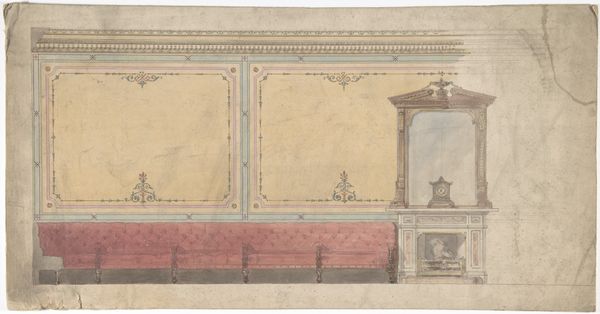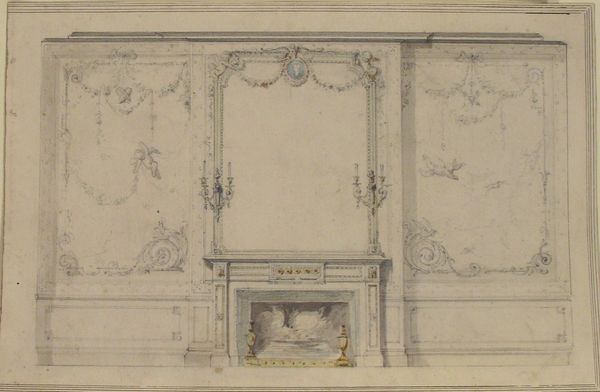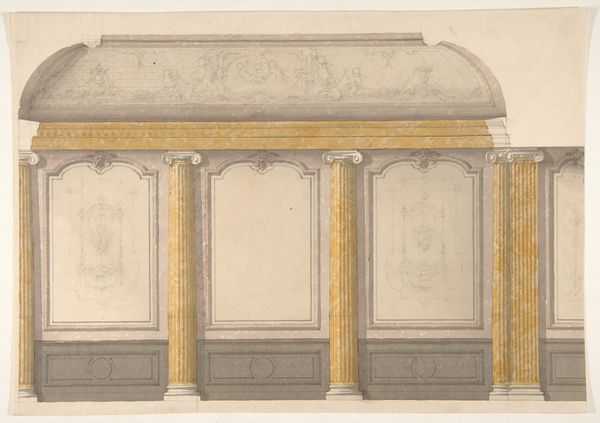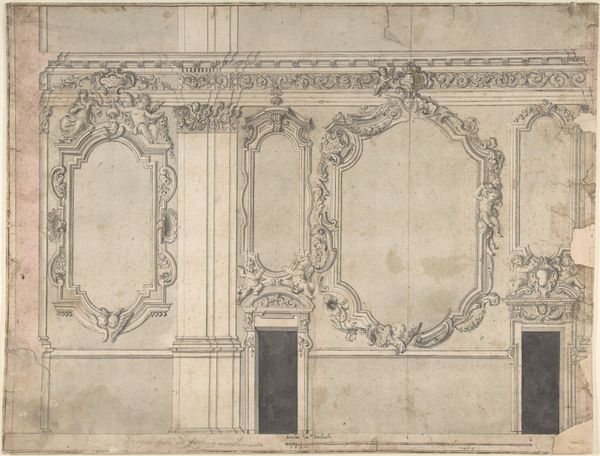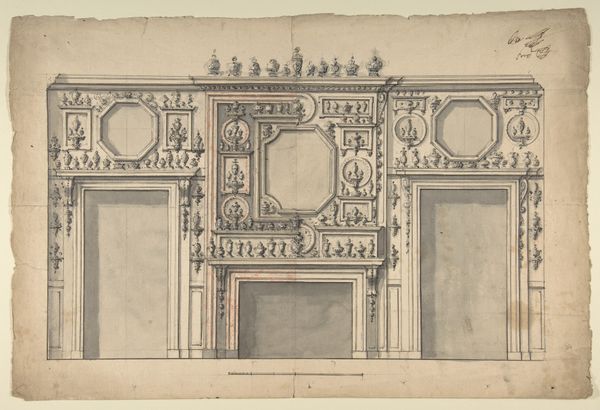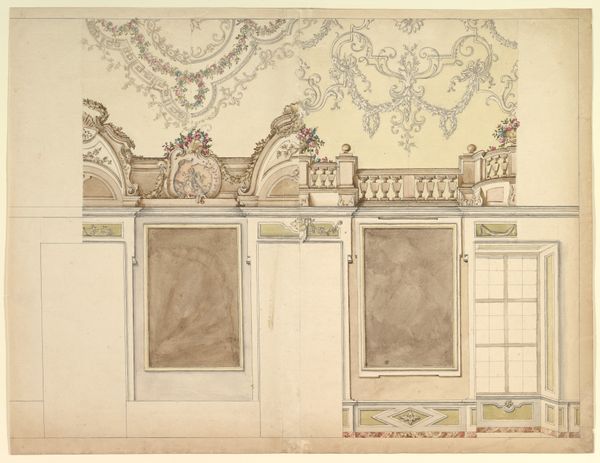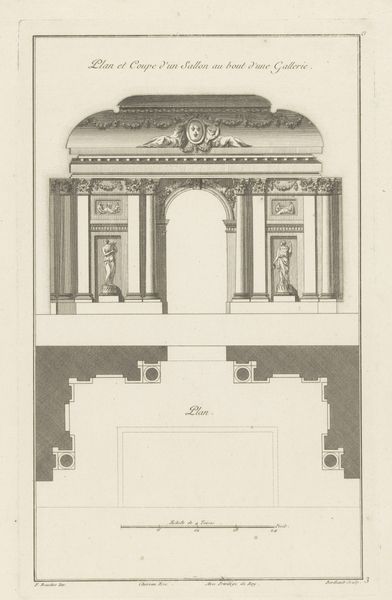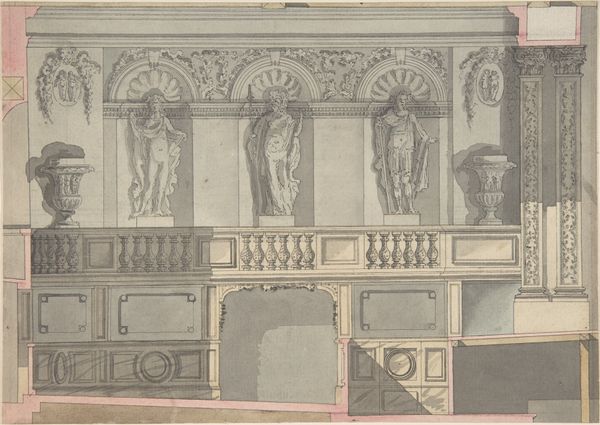
drawing, architecture
#
drawing
#
neoclacissism
#
historic architecture
#
traditional architecture
#
architectural
#
history-painting
#
architecture photography
#
architecture
Dimensions: 330 mm (height) x 558 mm (width) (billedmaal)
Peter Cramer, in the 18th century, created this watercolor and pen drawing, "Et kabinet," which translates to "A Cabinet" or "A Room." At first glance, it appears to be a simple depiction of an ornate interior, but it speaks volumes about the era's obsession with control and order. The symmetry and classical motifs reflect a desire to impose structure on both the physical and social worlds. Consider the role of the "cabinet" in the 18th century - a private space for contemplation, conversation, and the display of wealth and taste. It was a stage upon which social identities were performed and reinforced. Look at the portraits adorning the walls, possibly those of aristocratic figures; they remind us of the power dynamics inherent in such spaces. Who was allowed in, and who was excluded? What conversations took place, and whose voices were silenced? Cramer's drawing serves as a reminder of the complex interplay between art, power, and identity in the 18th century. It invites us to consider the ways in which spaces shape our experiences and perceptions of the world, and how these spaces are, in turn, shaped by the social forces that govern them.
Comments
No comments
Be the first to comment and join the conversation on the ultimate creative platform.

